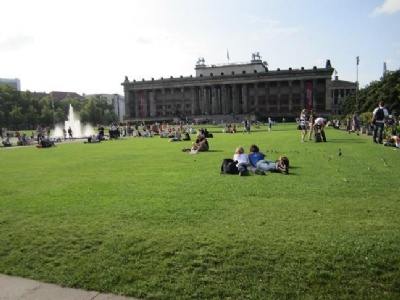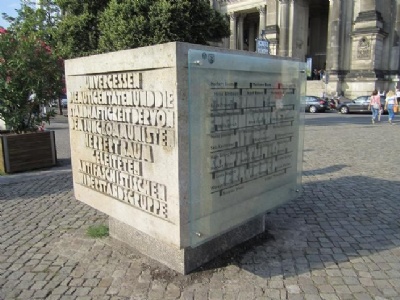Berlin – Lustgarten
In central Berlin near the Cathedral lies the park Lustgarten. The origin of the park dates back to the sixteenth century and its design has changed over time. Frederick I made it during the 1700s a military parade area, Frederick II (Great) restored the parade area into a park, Napoleon once again began to use it as a parade area during the French occupation in 1806. Under Prussia’s leadership in the 1820s, Lustgarten underwent a change in connection with a major reconstruction of Berlin. Lustgarten once again became a park with several paths, lawns and a fountain that was later replaced by a statue of Frederick III. During the turbulent twenties, the Communists and the Social democrats in particular used Lustgarten for large political manifestations and meetings with several hundred thousand participants. On February 7, 1933, about 200,000 people gathered for a demonstration against Hitler and the Nazis coming to power just over a week earlier, in 1934 the ground was paved, the statue of Frederick III was removed and Lustgarten began to be used again for mass meetings, this time by the Nazis.
Between May 8 and June 21, 1942, an exhibition was held in Lustgarten called, Das Sowjet-Paradies (Soviet Paradise). The exhibition had been compiled by Goebbel’s Propaganda ministry and displayed the misery and hardships in Soviet Union as well as the danger of communism. On May 18, 1942, an anti-Nazi communist grouping (Baum group) led by Herbert Baum carried out a failed fire attack on the exhibition. Baum and several other members were imprisoned a few days later. Baum was tortured to death and about thirty others were executed. After the war, Lustgarten ended up in East Berlin and the East Germans planted trees among the concrete slabs to downplay its military importance and the entire area changed its name to Marx-Engels Platz. After the fall of the wall, Lustgarten underwent yet another change and is today a traditional park in the middle of central Berlin.
Current status: Preserved with monument (2011).
Address: Am Lustgarten 1, 10178 Berlin.
Get there: Metro to Hackescher Markt Station.
Follow up in books: Kershaw, Ian: Hitler – A Biography (2008).


Besides the fact that Lustgarten was suitable for mass meetings, the Nazis understood that the place’s strong connection to the Communists and Social democrats was a factor to take into account. But in order to take advantage of this fact, the Nazis organized meetings that focused specifically on the working class, such as May 1. In this way they took over an old tradition and gave it a new content that served their own purposes. The monument that exists is dedicated to the Herbert Baum group and was established in the early eighties. The text is periodical and does not take into account the other events that took place at the site between 1933 and 1945. Due to its central location, Lustgarten is a popular destination for both tourists and Berliners.